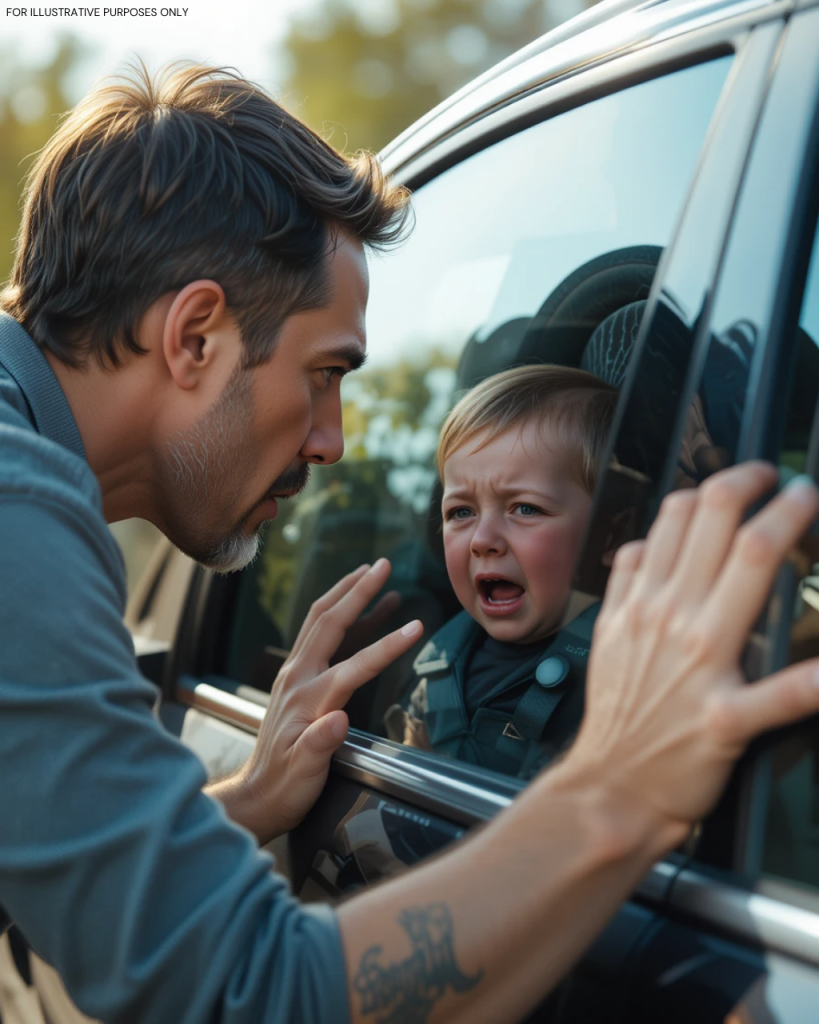
Slavik was just heading home after another long day at the construction site. The summer heat was suffocating, pressing down like a heavy blanket. As he turned into a quiet alley near an old supermarket, something stopped him—a faint, broken sound. A child’s crying.
The sound was coming from inside one of the vehicles—an expensive car with dark tinted windows. He stepped closer and saw a baby inside.
The child couldn’t have been older than a year. His face was flushed, eyes half-closed, lips cracked. He was losing consciousness.
Slavik yanked the door handle but every door was locked. The heat inside must have been unbearable. For a second, his mind raced—breaking a window meant trouble. But then he looked at the child again, barely breathing.
He picked up the stone and struck. The third blow shattered the glass. Slavik reached in, unbuckled the car seat, and pulled the limp baby into his arms.

He ran—sprinting the two blocks to the nearest clinic. A doctor came moments later, pale but calm. “You were just in time. Five more minutes, and we couldn’t have saved him.”
Fifteen minutes later, a woman burst through the clinic doors—young, fashionable, furious.
“YOU! You broke my car?! Are you insane? I left a number under the wiper! I was just in the store for a minute!”
Slavik stared at her. “Your child almost died.”
“Not your business!” she snapped. “You’ll pay for this! I’m calling the police!”
The officers arrived quickly, asked Slavik, “Is this true? You broke the window?”
Just then, the nurse reappeared with a doctor behind her. “This man saved that baby’s life,” she said firmly.
The police later confirmed the truth: the mother had been in the store for 19 minutes. That day, the air temperature was 34°C (93°F), but inside the car, it had soared to over 60°C (140°F). She was fined heavily, lost her driver’s license temporarily, and faced charges for endangering a child.
Slavik, meanwhile, was invited onto local news. People started calling him a hero. The story went viral online. Strangers sent him thank-you letters, offered donations for the broken window, even job opportunities.
Months passed. Then, one afternoon, he saw a familiar face at a bus stop. The mother and her son beside her.

“Slavik?” she asked softly. “I just wanted to say I’m sorry. That day, I panicked. I still can’t forgive myself. He’s alive because of you.”
Slavik looked at the child—healthy, smiling, clutching a stuffed bunny. “Take care of him. Don’t ever leave him alone again.”
One Year Later
Life moved on. Slavik went back to his job, his routine. But one spring morning, he received a letter—handwritten, in crayon:
“Hello, Uncle Slava! My name is Artem. I’m 2 years and 3 months old. Mommy says you saved me. I don’t remember, but she says you’re a hero. I like soup and drawing cars.
Thank you!
Love, Artem and Mommy.”
Inside was a drawing: a crooked car, a man with a square head, the sun, and a label: “SAVIOR.” Slavik smiled for the first time in a long time. He pinned the letter to his fridge, sat down with a cup of tea—and breathed just a little easier.